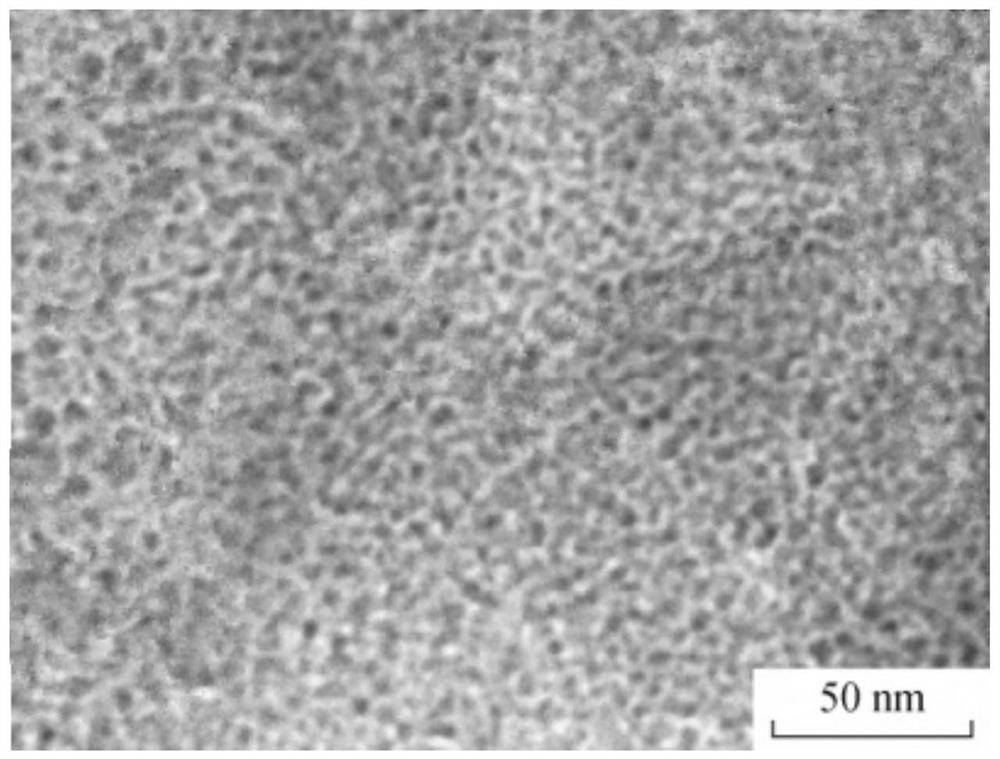Environment-friendly refractory material for buildings and preparation method thereof
A technology for refractory materials and construction, applied in the field of environmental protection refractory materials for construction and their preparation, can solve the problems of long production cycle, labor consumption, corrosion equipment, etc., and achieve the effect of improving production efficiency, broad application prospects, and small thermal conductivity
- Summary
- Abstract
- Description
- Claims
- Application Information
AI Technical Summary
Problems solved by technology
Method used
Image
Examples
Embodiment 1
[0035] Composition of raw materials (parts by weight): 30 parts of modified phenolic resin, MgO-Al 2 o 3 -10 parts of ZnO nanopowder, 5 parts of fly ash floating beads modified by graphene oxide, 3 parts of glass wool, 1 part of expanded graphite, 0.5 part of triethanolamine, 0.5 part of petroleum ether, 0.1 part of alkanolamide, water-reducing 1 part of agent, 10 parts of perlite, 3 parts of ethylenediamine, 1 part of adipic acid, 2 parts of polycaprolactone glycol, 1 part of glycerol triglyceride, and 1 part of polyvinyl alcohol.
[0036] The water reducer is a combined water reducer, including lignosulfonate and melamine water reducer, the mass ratio of lignosulfonate and melamine water reducer is 5:1.
[0037] The modified phenolic resin is prepared by the following method: add 5g phenol, 0.5g formaldehyde, 0.01g catalyst CuCl / Me6-TREN, and 0.1g dispersant polyethylene glycol 400 into the device respectively, stir and heat to the polycondensation temperature of 95°C Afte...
Embodiment 2
[0046] Composition of raw materials (parts by weight): 70 parts of modified phenolic resin, MgO-Al 2 o 3 - 20 parts of ZnO nano powder, 25 parts of fly ash floating beads modified by graphene oxide, 10 parts of glass wool, 5 parts of expanded graphite, 1 part of hexamethylenetetramine, 2 parts of n-hexane, fatty alcohol polyoxyethylene 1 part of sodium ether sulfate, 2 parts of water reducer, 20 parts of perlite, 5 parts of ethylenediamine, 3 parts of adipic acid, 5 parts of polycaprolactone glycol, 4 parts of glycerol triglyceride, polyethylene Alcohol 4 parts.
[0047] The water reducer is a combined water reducer, including lignosulfonate and melamine water reducer, the mass ratio of lignosulfonate and melamine water reducer is 5:5.
[0048] The modified phenolic resin is prepared by the following method: Add 5g of phenol, 1g of formaldehyde, 0.1g of catalyst TEA, and 0.5g of dispersant polyvinyl alcohol into the device respectively, stir and heat to the polycondensation ...
Embodiment 3
[0057] Composition of raw materials (parts by weight): 40 parts of modified phenolic resin, MgO-Al 2 o 3 -12 parts of ZnO nanopowder, 10 parts of fly ash floating beads modified by graphene oxide, 4 parts of glass wool, 2 parts of expanded graphite, 0.6 part of sodium bicarbonate, 0.7 part of dichlorodifluoromethane, α-alkenyl sulfonate 0.2 parts of sodium phosphate, 1.2 parts of water reducer, 12 parts of perlite, 3.5 parts of ethylenediamine, 1.5 parts of adipic acid, 3 parts of polycaprolactone glycol, 1 part of glycerol triglyceride, polyvinyl alcohol 1 serving.
[0058] The water reducer is a combined water reducer, including lignosulfonate and melamine water reducer, the mass ratio of lignosulfonate and melamine water reducer is 5:2.
[0059] The modified phenolic resin is prepared by the following method: add 5g phenol, 0.6g formaldehyde, 0.02g catalyst dibutyltin diacetate, and 0.2g dispersant ethylene-vinyl acetate copolymer into the device respectively, stir and he...
PUM
| Property | Measurement | Unit |
|---|---|---|
| particle diameter | aaaaa | aaaaa |
| particle diameter | aaaaa | aaaaa |
Abstract
Description
Claims
Application Information
 Login to View More
Login to View More - R&D
- Intellectual Property
- Life Sciences
- Materials
- Tech Scout
- Unparalleled Data Quality
- Higher Quality Content
- 60% Fewer Hallucinations
Browse by: Latest US Patents, China's latest patents, Technical Efficacy Thesaurus, Application Domain, Technology Topic, Popular Technical Reports.
© 2025 PatSnap. All rights reserved.Legal|Privacy policy|Modern Slavery Act Transparency Statement|Sitemap|About US| Contact US: help@patsnap.com

